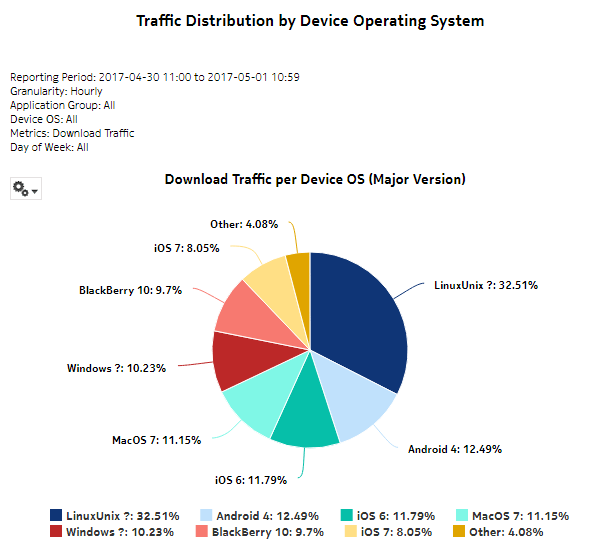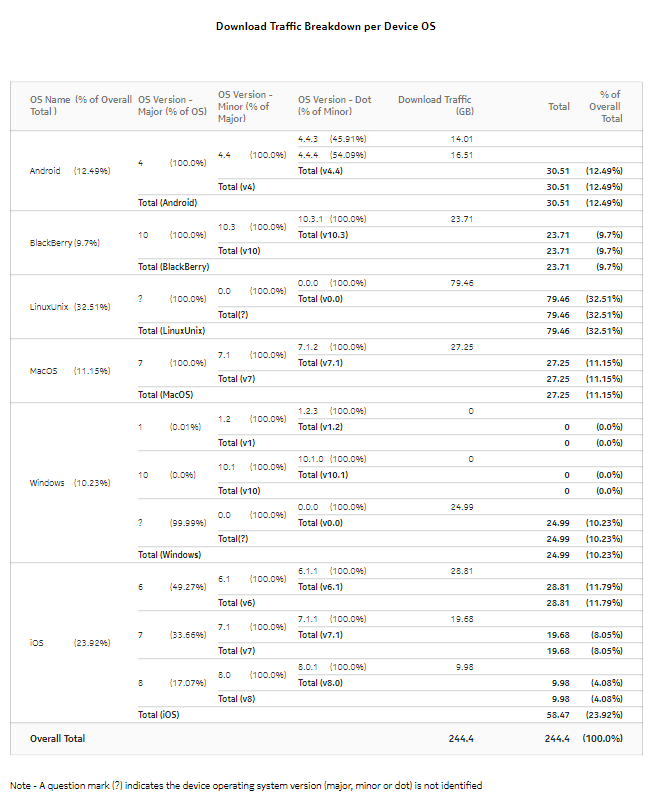Traffic Distribution By Device Operating System report
Traffic Distribution By Device Operating System report overview
The Traffic Distribution By Device Operating System report shows the traffic distribution based on the end-user device OS.
Use cases
Network resource planning—Use the report to adjust bandwidth, for example, based on the availability of a new device OS version, and the projected mass download of the new OS.
Risk management—Use the report to apprise customers of the number of devices of a specific type; for example, when the devices are known to adversely affect traffic in some manner.
Report characteristics
The following table lists the principal report characteristics.
Table 4-4: Traffic Distribution By Device Operating System report characteristics
Example
The following figure shows a report example.
Note: A question mark (?) indicates that the device operating system version (major, minor, or dot) is not identified.
Figure 4-5: Traffic Distribution by Device Operating System report

Figure 4-6: Traffic Distribution By Device Operating System report—download traffic breakdown
